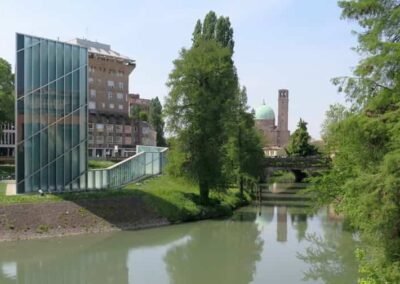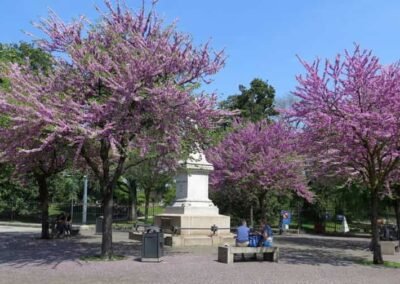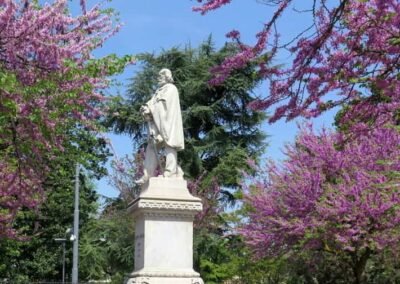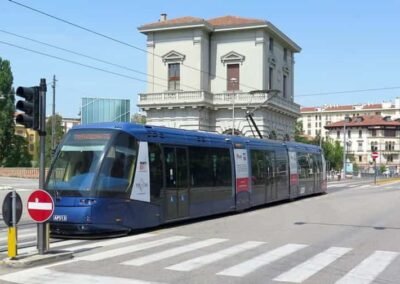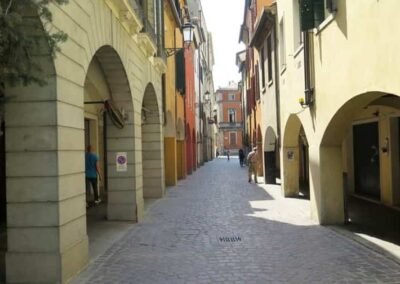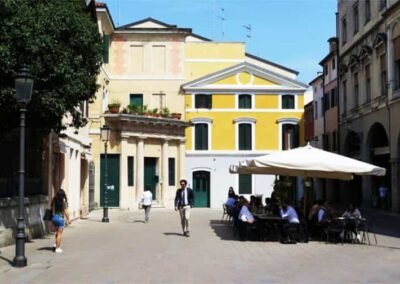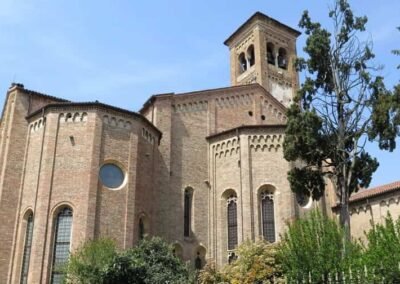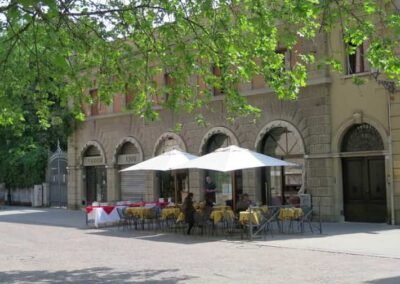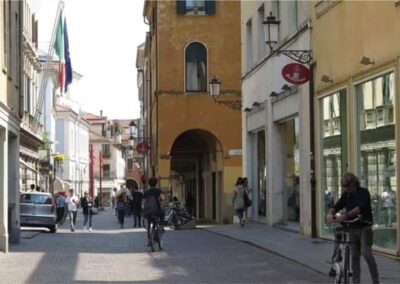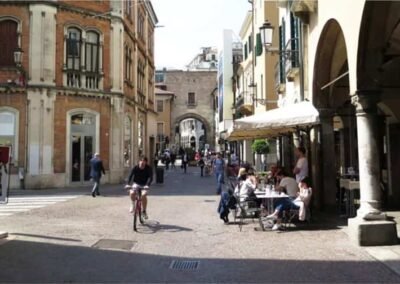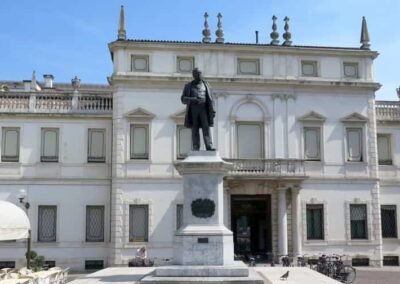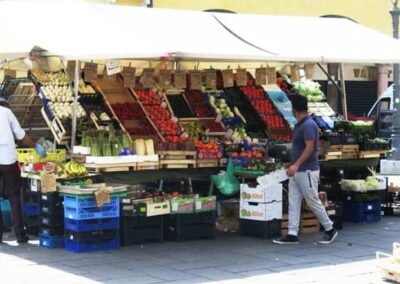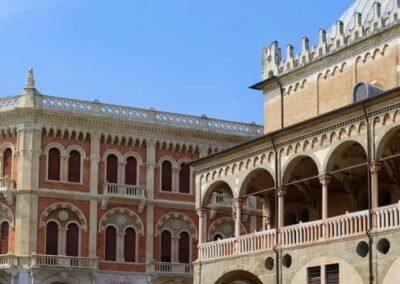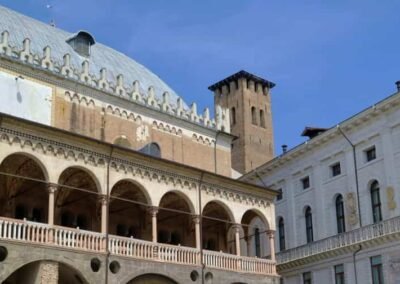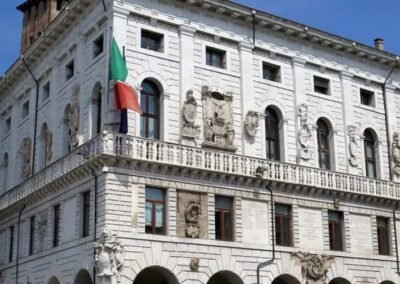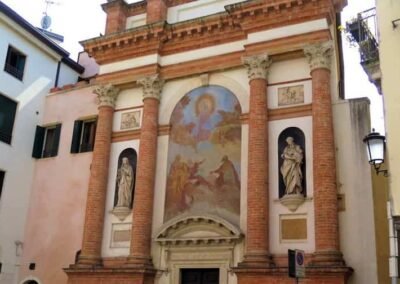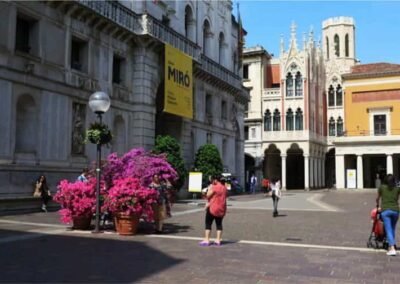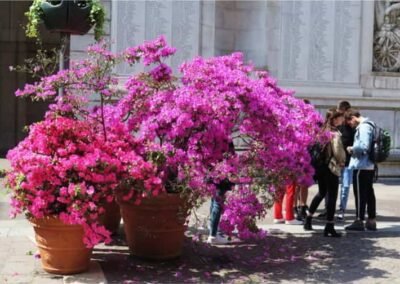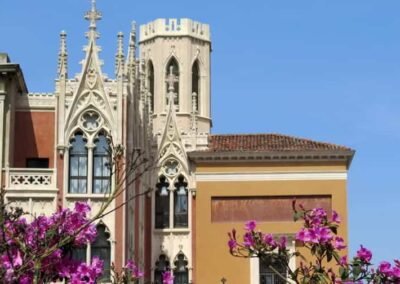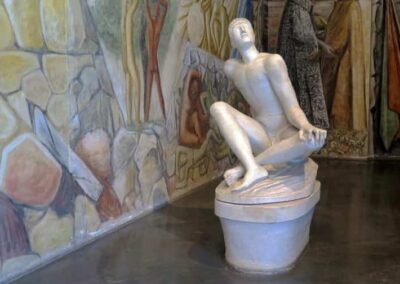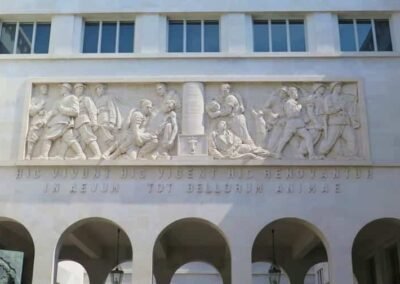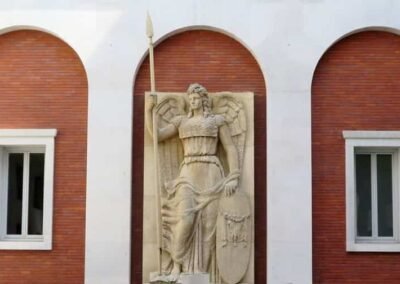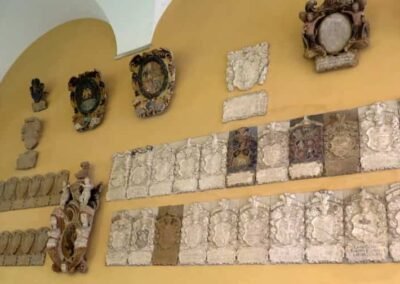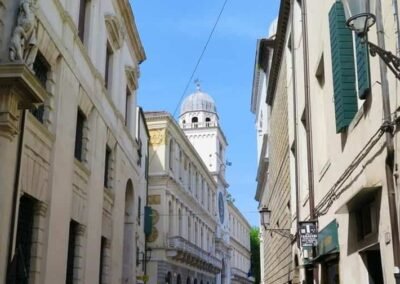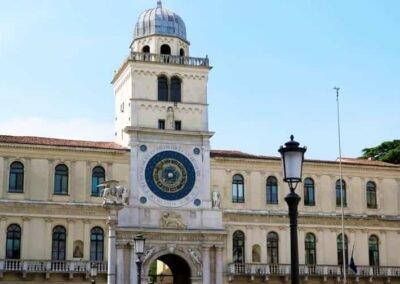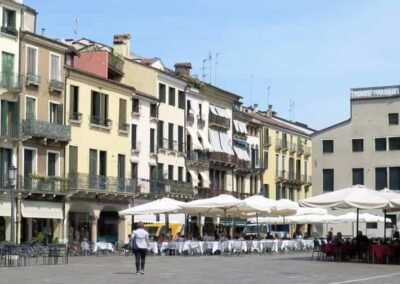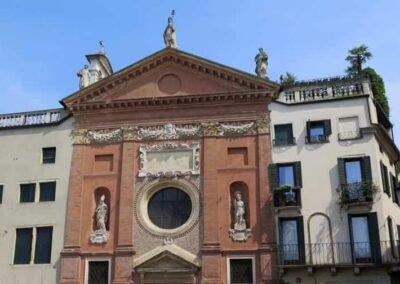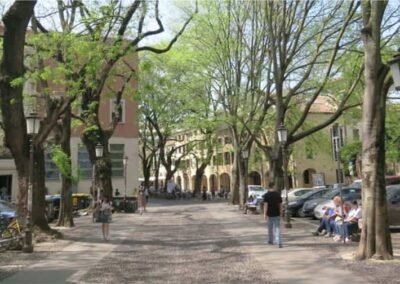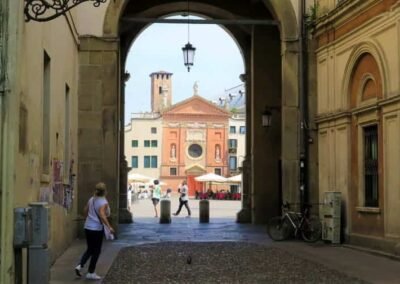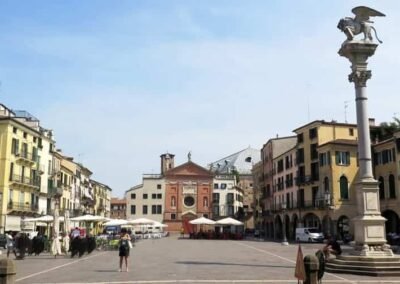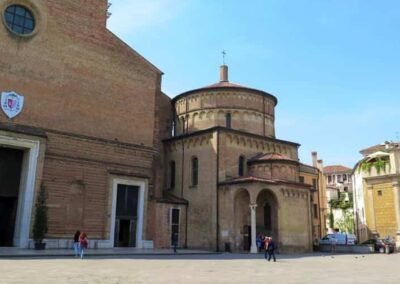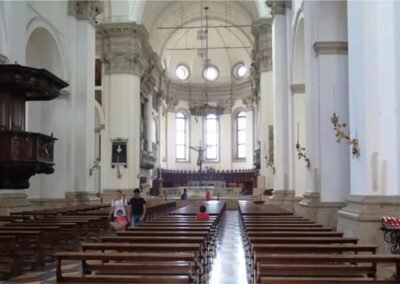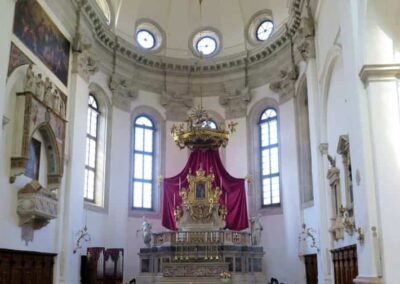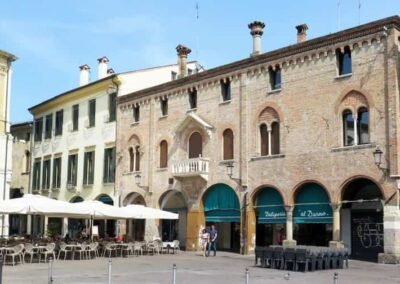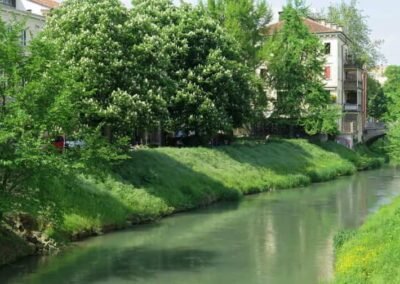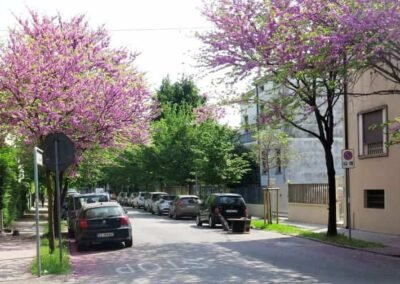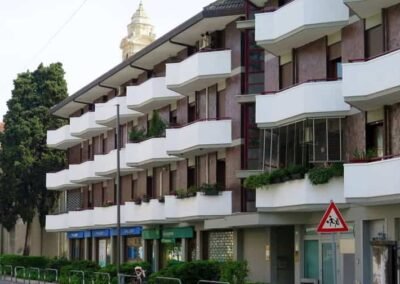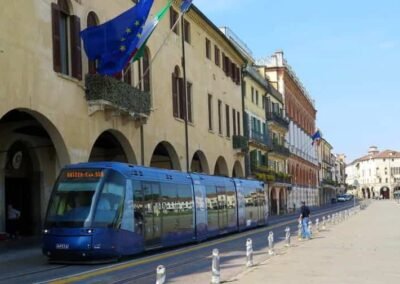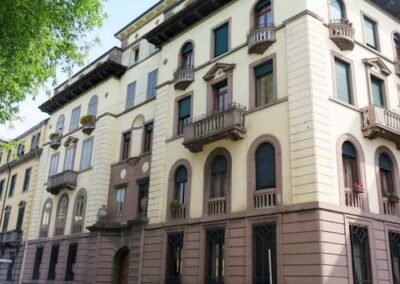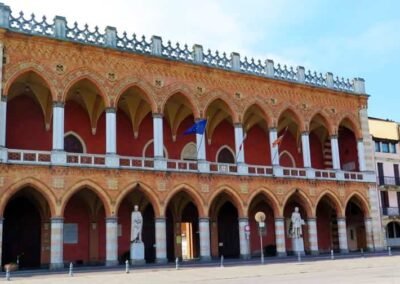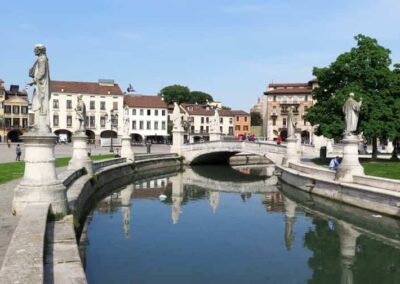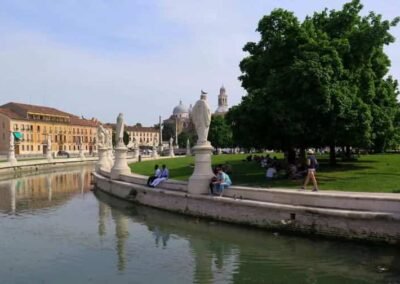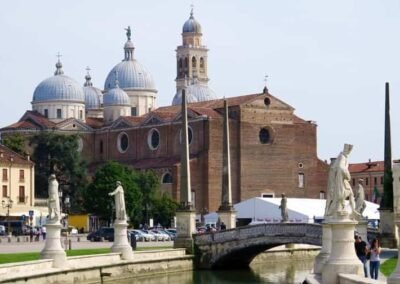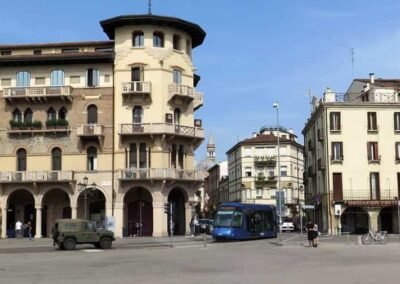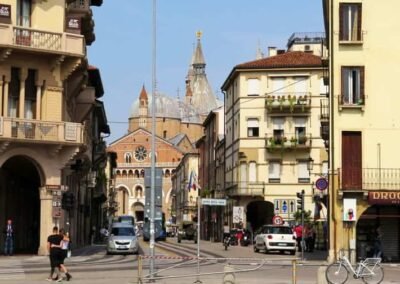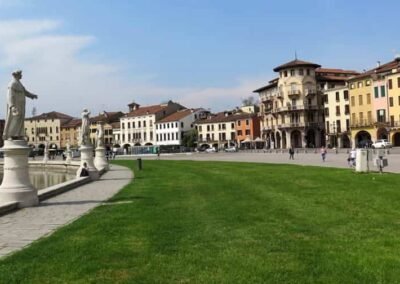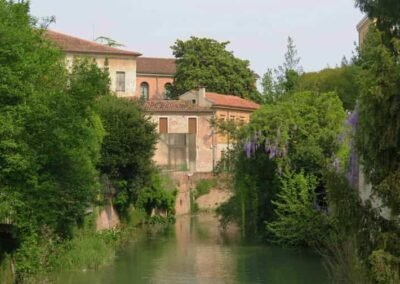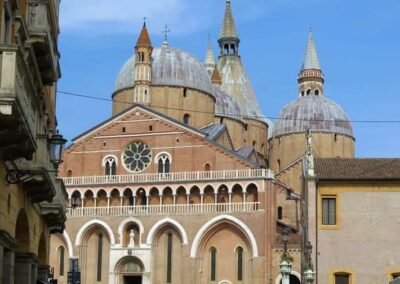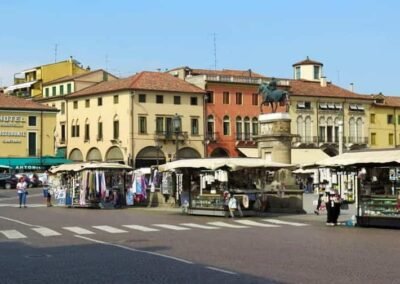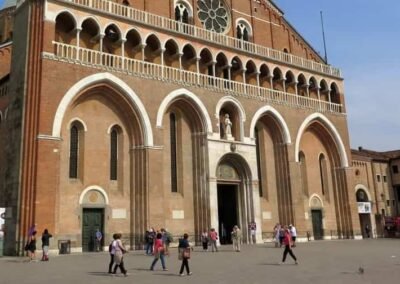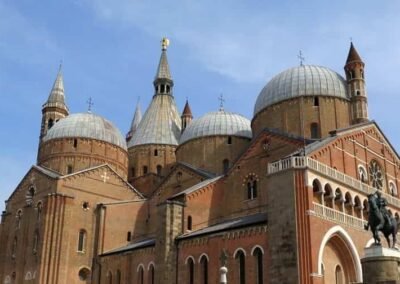HOME
THE REGIONS OF ITALY
PLACES IN ITALY
Italy in Photos
Corso Giuseppe Garibaldi, 35121 Padova, Italy (April 2018)
Padova
Vasto, a picturesque town located on Italy’s Adriatic coast, in the southern part of the Abruzzo region. Rich in history, natural beauty, and cultural heritage, Vasto offers a perfect blend of old-world charm and modern-day attractions. This coastal town, perched on a hill overlooking the azure waters of the Adriatic Sea, is renowned for its stunning landscapes, ancient architecture, and vibrant local traditions, making it an ideal destination for travellers seeking an authentic Italian experience. Vasto’s roots stretch back thousands of years. Originally known as Histonium during the Roman era, the town has a rich historical background shaped by various civilizations, including the Romans, Lombards, and Normans. Evidence of its Roman past can be seen in the remnants of baths, amphitheatres, and mosaics scattered around the town. Throughout the Middle Ages, Vasto grew in prominence under various rulers, leaving a tapestry of architectural styles and monuments, including the Castello Caldoresco, a fortress built in the 15th century, and the beautiful Palazzo d’Avalos, which stands as a symbol of the town’s aristocratic past. The historic centre of Vasto is a delightful maze of narrow, winding streets, medieval buildings, and charming squares. One of the main highlights is Piazza Rossetti, named after the Italian poet and patriot Gabriele Rossetti, a native of Vasto. The square is a bustling hub surrounded by impressive buildings, including the Cathedral of San Giuseppe, with its baroque and neoclassical influences.The Palazzo d’Avalos, a Renaissance palace that once housed the ruling d’Avalos family, is another notable landmark. Today, it serves as a museum complex, showcasing art, archaeological finds, and local history. Visitors can explore its beautifully manicured gardens and enjoy panoramic views of the town and sea below.
Vasto is as famous for its natural beauty as it is for its historical landmarks. The town boasts several breathtaking beaches, most notably the Spiaggia di Vasto Marina, a long stretch of golden sand that attracts both locals and tourists alike. The warm, crystal-clear waters of the Adriatic Sea make it a perfect spot for swimming, sunbathing, and water sports. For nature lovers, Vasto is also the gateway to the nearby Punta Aderci Nature Reserve, one of Abruzzo’s most spectacular coastal areas. The reserve offers a mix of rugged cliffs, pebble coves, and pristine beaches, all set against a backdrop of rolling hills and lush vegetation. Hiking trails within the reserve provide stunning views of the coastline, while the more adventurous can take part in activities such as cycling, snorkelling, or birdwatching. No introduction to Vasto would be complete without mentioning its culinary delights. The local cuisine, like much of Italy, is rooted in tradition and fresh ingredients. Given its coastal location, seafood features prominently on most menus. One must-try dish is brodetto alla Vastese, a hearty fish stew made with a variety of local seafood and flavoured with tomatoes, garlic, and spices. Vasto’s proximity to the fertile Abruzzo countryside also means that its dishes are complemented by local vegetables, olive oil, and wines, particularly the region’s famed Montepulciano d’Abruzzo and Trebbiano wines. Throughout the year, Vasto celebrates its rich cultural traditions with a range of festivals and events. The most significant of these is the Festa di San Michele, held annually in late September in honour of the town’s patron saint, Saint Michael the Archangel. This lively celebration includes processions, music, and fireworks, drawing both locals and visitors to partake in the festivities. Vasto is a town that effortlessly combines the best of Italy: history, culture, natural beauty, and delicious food. Whether you’re exploring ancient ruins, lounging on sun-drenched beaches, or enjoying a plate of fresh seafood, Vasto offers a quintessentially Italian experience in a serene and picturesque setting.
Worth a Visit
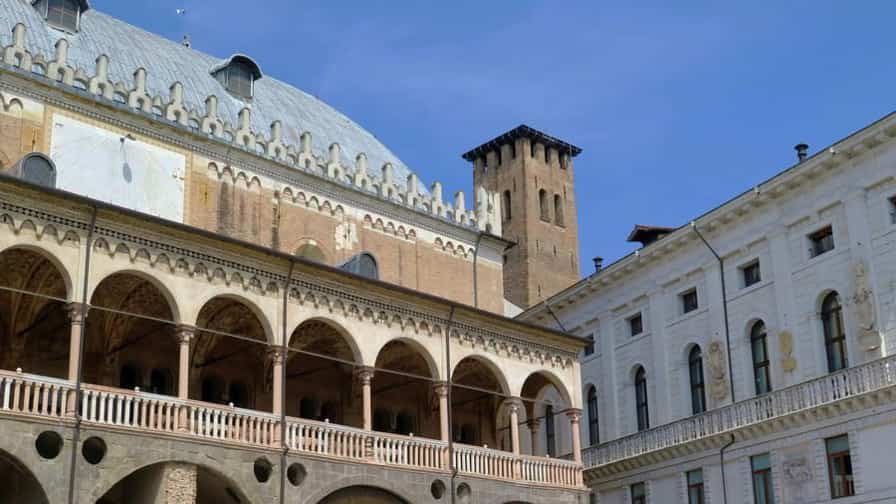
Piazza delle Erbe in Padova is one of the city’s most vibrant and historic squares, brimming with centuries of tradition and daily life. Located in the heart of the medieval centre, it has served as a bustling marketplace since the 13th century, and today it remains a lively hub where locals and visitors gather. The square is framed by elegant Renaissance and medieval buildings, with the majestic Palazzo della Ragione dominating its northern side. This palace, once the seat of the city’s law courts, features a vast hall adorned with fascinating frescoes, adding to the square’s rich atmosphere. By day, stalls overflow with fresh produce, flowers, spices, and local delicacies, reflecting Padova’s enduring mercantile spirit. By evening, the piazza transforms into a social space filled with cafés, restaurants, and aperitivo culture. Blending history, architecture, and everyday charm, Piazza delle Erbe captures the authentic essence of Padova
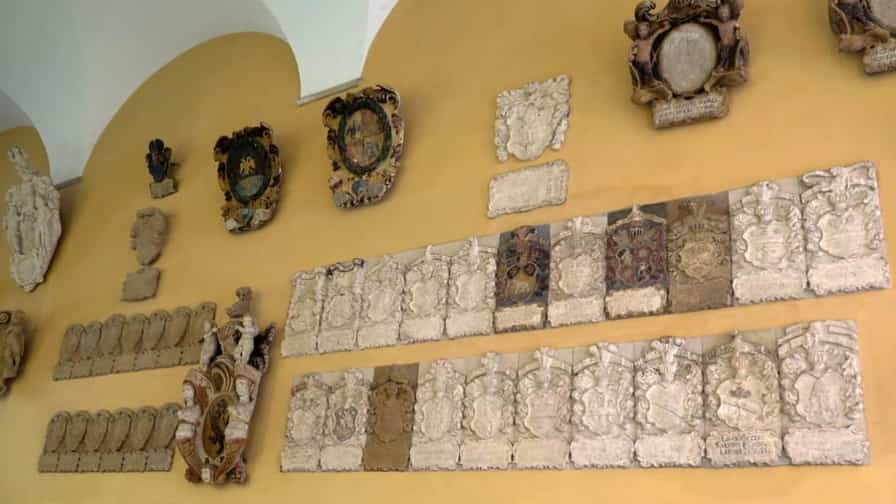
Palazzo Bo, located on Via VIII Febbraio in Padova, is a historic and prestigious landmark that has been at the heart of the city’s academic life for centuries. Serving as the main building of the University of Padova, founded in 1222, it embodies a rich legacy of learning, research, and innovation. The palace is a striking example of Renaissance architecture, featuring elegant courtyards, ornate halls, and grand staircases that reflect its centuries-old heritage. Inside, visitors can explore historic lecture halls, including the famous Anatomical Theatre, where pioneering medical studies were conducted. The building also houses impressive collections of scientific instruments, manuscripts, and artworks that showcase the university’s scholarly achievements. Steeped in tradition yet vibrant with academic life, Palazzo Bo is not only a centre of education but also a cultural and historical treasure, offering a unique glimpse into Padova’s intellectual and architectural heritage.
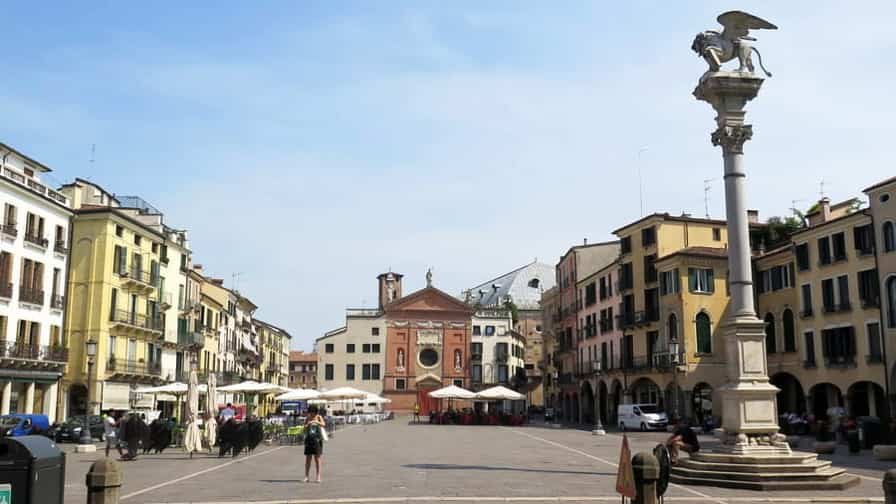
Piazza dei Signori, located in the heart of Padua, Italy, is a historic square that has been central to the city’s civic and political life since the 14th century. The square was established during the rule of the Carraresi family, who sought to create a space that emphasized the grandeur of their palace and served as a venue for public events such as tournaments and civic celebrations. At the heart of the square stands the Torre dell’Orologio, or Clock Tower, which dates back to the early 15th century. This tower is renowned for its astronomical clock, one of the oldest in Italy, which has been marking time for centuries. The square is also bordered by significant buildings, including the Palazzo del Capitanio and the Palazzo dei Camerlenghi, which showcase Renaissance and Mannerist architectural styles. Today, Piazza dei Signori remains a vibrant centre of activity, hosting markets, cultural events, and serving as a gathering place for both locals and visitors. Its rich history and architectural beauty make it a must-visit destination for anyone exploring Padua.
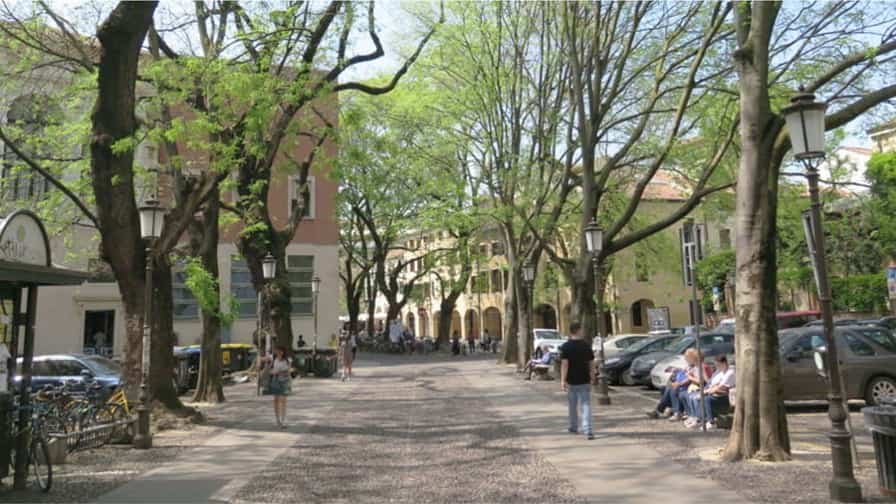
Piazza Capitaniato in Padova is a historic square that evolved from a courtyard of the Carrarese Palace into a vibrant academic and social hub. During Venetian rule, it became the seat of the Capitanio, the city’s military governor, and housed administrative offices, stables, and barracks. Today, it remains a lively centre, especially popular among university students. The square is flanked by notable buildings, including Palazzo del Capitanio, which houses municipal offices and the Department of Philosophy, Sociology, Pedagogy, and Applied Psychology. Adjacent to it is Palazzo Liviano, designed by Gio Ponti in the 1930s, which hosts the Museum of Archaeological Sciences and Art. Piazza Capitaniato’s central location and rich history make it a must-visit destination in Padova, offering a blend of academic heritage and vibrant student life.
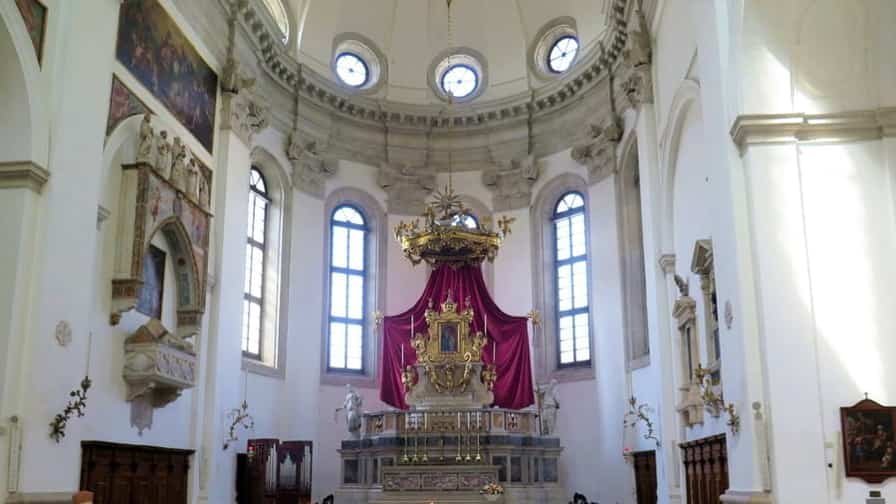
The Duomo di Padova, officially known as the Cathedral of Santa Maria Assunta, is a monumental church located in the heart of Padua, Italy. Dedicated to the Assumption of the Virgin Mary, it serves as the seat of the Bishop of Padua. The cathedral’s history dates back to the 4th century, with the current structure being the third built on the same site. The first cathedral was erected after the Edict of Milan in 313 but was destroyed by an earthquake in 1117. The present building was completed in 1754, following designs by architects such as Andrea da Valle and Girolamo Frigimelica. Notably, the cathedral’s grand façade was never finished, and the dome suffered damage during World War I. Adjacent to the cathedral is the Baptistery, renowned for its 14th-century frescoes by Giusto de’ Menabuoi, which depict scenes from the life of Christ and the Virgin Mary. The cathedral’s interior houses significant artworks, including the Madonna with Child by Giusto de’ Menabuoi and paintings by Giandomenico Tiepolo. The crypt beneath the cathedral contains the tombs of saints such as Saint Daniel, Saint Leonino, and Saint Gregory Barbarigo.
Photo Gallery of Walk 1 – Corso Giuseppe Garibaldi to Via VIII Febbraio
Approximately 1.66 km – 1.03 miles
The walk starts in Corso Giuseppe Garibaldi – Giardini dell’Arena – Via Porciglia – Piazza Eremitani – Via Carlo Cassan – Via Altinate – Piazza Camillo Benso Conte di Cavour – Via VIII Febbraio – Via Guglielmo Oberdan – Piazza dei Frutti – Via Francesco Squarcione – Piazza delle Erbe – Via S. Canziano – Via VIII Febbraio
Photo Gallery of Walk 2 – Palazzo Bo, Via VIII Febbraio to Piazza del Santo
Approximately 3.37 km – 2.09 mile
The walk starts at Palazzo Bo, Via VIII Febbraio – Via Municipio – Piazza delle Erbe – Via Daniele Manin – Via Monte di Pietà – Piazza dei Signori – Piazza Capitaniato – Piazza dei Signori – Via Monte di Pietà – Via Via del Vescovado – Via Tadi – Riviera Albertino Mussato – Ponte San Giovanni delle Navi – Riviera Paleocapa – Ponte Paleocapa – Via Sant’Alberto Magno – Via P. Paoli – Via Alberto Cavalletto – Piazza Prato della Valle – Via Beato Luca Belludi – Piazza del Santo
COPYRIGHT © 2018-2025 ITALY IN PHOTOS - ALL RIGHTS RESERVED
